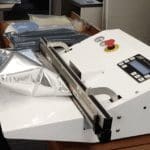The Importance of Good Surface Prep for Anticorrosion Coatings Performance
Good surface prep is critical to achieving success in almost any coating application. When it comes to metal surfaces, surface prep gets a little more complicated because of the potential for rust. By following these recommended guidelines for surface prep, painters, contractors, maintenance personnel, and other end users can get the most out of their corrosion preventative coating system.
Start with a Clean Surface
The number one key to good surface prep is making sure the substrate is free of grease, oil, dirt, fingerprints, drawing compounds, or any surface contamination that could affect adhesion. Otherwise, painters and facility owners could come back to find problems with pinholes, craters, telegraphing (e.g., a fingerprint shows up at the surface of the coating), and paint peeling prematurely. Rinsing with the VpCI®-410 series of cleaners is a great way to make sure the surface is clean and protected against flash rust before painting.
Dealing with Rusty Metal
Corrosion on the metal surface is one contaminant that requires additional surface prep beyond a simple rinse. This is because painting over rust can cause the paint to peel and fail early. Rust can also bleed out through the coating over time, creating unsightly stains. The solution is to either remove or passivate the rust.
How to Remove Rust
Mechanical grinding or blasting is often used to remove corrosion, but these traditional methods can be labor-intensive and limited by location. A great alternative that does not require special equipment is rust removal with Cortec’s biobased VpCI®-422 (liquid) or VpCI®-423 (gel for vertical surfaces). After allowing these products to sit on the surface for 20-30 minutes at a time, a basic scrub pad can be used to clean off the metal. Rust removal should be followed with cleaning and neutralization using a VpCI®-410 series flash rust-inhibiting cleaner such as VpCI®-414. The rust removal process can be repeated as needed.
How to Passivate Rust
An alternative option is to passivate the rust with CorrVerter® Rust Converter Primer. This is a great choice for surfaces with tight rust or situations where other forms of rust removal are not allowed, preferred, or practical. Loose rust should be brushed off and the surface cleaned before spraying or painting CorrVerter® onto the metal. The primer turns black when dry, passivates the rust, and protects against re-rusting, leaving an excellent surface over which to apply the final coat.
Prepare for Coatings Success!
Success in any area of life often starts with a good foundation. This is no less true when coating metal surfaces. While painting metal requires extra thought and care, surface prep does not have to be difficult with the proper use of VpCI® cleaners, rust removers, and/or rust converter. Contact Texas Technologies for further assistance in achieving successful surface prep for your next Cortec® Micro-Corrosion Inhibiting Coatings project.

